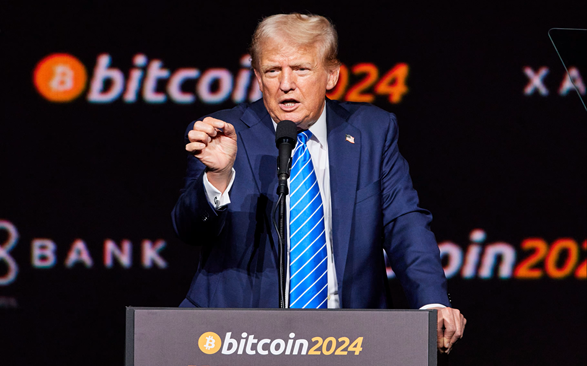Introduction
In the Design Paper for the eNaira released by the Central Bank of Nigeria (CBN) most recently, it states that “[l]ike the eNaira itself, the Design Document is also a work in process.” The CBN then “welcomes continued input on these design elements from all Nigerians” as the CBN “work[s] together to develop the eNaira so that it develops in a way that delivers all the benefits to Nigeria envisaged [sic] by the CBN”.
This development is a welcomed development. But it is also an interesting one. It is particularly interesting if the events in the last several months concerning the planned launch of the eNaira are anything to go by.
How the CBN had been approaching CBDC adoption in Nigeria, without prior public conversations or engagement about the possible adoption of a central bank digital currency (CBDC) in Nigeria
At the 306th Banker’s Committee meeting in June 2021, the CBN announced that it was working on a central bank digital currency (CBDC). The CBN Director of Information Technology Department, Rakiyat Mohammed, disclosed this during a press briefing on the Bankers’ Committee meeting held 10 June 2021.
Then on 22 July 2021, in a meeting with stakeholders, the CBN announced its readiness on the launch of the eNaira, Nigeria’s CBDC, by October 2021. This announcement came as a surprise to a number of stakeholders in that meeting. These concerned stakeholders asked various questions bordering on the design and architecture of the eNaira. Addressing these concerns, the CBN Technical Working Committee on the CBDC informed stakeholders that the CBN has in fact been conducting research on the CBDC since 2017, thus conducting a proof of concept in October was not unachievable.
Eventually, on the eve of October 1, CBN suspended the eNaira launch. Understandably, Nigerians who had been skeptical about CBN’s preparedness became more skeptical. But according to the CBN spokesman Osita Nwanobi, the suspension was due to other key activities lined up for the celebration of Nigeria’s 61st Independence Anniversary and in “deference to the mood of national rededication to the collective dream of One Nigeria”.
Now here is the question: With the CBN releasing to the public a comprehensive eNaira design paper detailing for the first time what it is thinking, where it is coming from, and where it is going to regarding CBDC adoption in Nigeria only a few weeks after suspending the eNaira launch, could CBN have in deference to the mood of the need for better preparedness decided to engage Nigerians more about the eNaira?
Probably.
This is because of several firsts the CBN may have commendably achieved with its latest move. In the next three subheadings, we identify three notable changes that we consider significant. Then in a subsequent piece, we will be looking at the CBN’s design principles for the eNaira from a cryptocurrency-adoption perspective. Now, let’s look at the three changes with CBN’s CBDC posture you may also find to be notable.
CBN openly considers blockchain—more broadly referred to as distributed ledger technology (DLT)—as "one of the most transformational technologies of the last decade".
First, for the first time ever, CBN is sharing its thoughts—in a public document—on what DLT means to the CBN and how it believes it may impact on various sectors of the economy.
According to the CBN, DLT “has emerged as one of the transformational technologies of the last decade and its introduction is gathering significant pace around the world. DLT allows for highly transparent, secure, tamper-proof transactions between parties, and creates trust even when the parties have no reason to trust each other. Critical use cases include identity management, supply chain verification, land registry and many more. Perhaps the most important use cases are payments, where DLT can ensure secure, tamper-proof, verifiable transactions in a much simpler way as settlement and payment are the same process. As a result, the cost of payments is significantly reduced.”
Of course the CBN is not expected to include cryptocurrencies as one of the use cases of DLT or blockchain in its eNaira whitepaper! It is not news that currently there is no love lost between most central banks and cryptocurrencies generally. It is however worth noting that the bitcoin blockchain is the first distributed ledger technology that solved the double-spend problem after applying cryptography to create Bitcoin–an electronic payment system combining a distributed peer-to-peer system, a currency called bitcoin, and a protocol.
CBN reconfirms that it began its CBDC journey in 2017, perhaps to debunk the belief in some quarters that the eNaira development process may have been rushed.
Second, although several CBN representatives have mentioned in their communications on the CBDC that the CBN CBDC journey started since 2017, this is the first time CBN has stated this fact in a public document.
According to the CBN, the CBDC journey started in 2017, “with extensive study, consultations, identification of use cases and the testing of the CBDC concept in a Sandbox environment”. It is based on this preliminary work that CBN believes it is “now ready to launch Nigeria’s CBDC – the eNaira”.
CBN details its view on its approach to CBDC adoption and development in Nigeria in order to provide Nigerians a deep understanding of the eNaira concept.
Third, while the CBN has been involved in consultations bordering on CBDC adoption in Nigeria, the publication of the Design Paper for the eNaira represents the first time the CBN is putting out there its own approach to CBDC development. This central bank approach is based on Nigeria’s “unique needs and circumstances”, says the CBN.
In CBN’s words in the eNaira design paper, “[t]his will provide Nigerians – and all actors within the payment system, such as individuals, banks, Telcos, FinTechs and merchants – a deep understanding of the eNaira concept.”
A few banks in Nigeria have started integrating the eNaira on their platforms. Though the CBN has most recently announced that eNaira will be available to Nigerians without need for the Internet, Speed Wallet (the eNaira app by the CBN) is also available on Apple Store and Google Playstore.
Conclusion
It is quite commendable to see the CBN releasing its eNaira whitepaper or eNaira design paper to the members of the public. Containing critical details about eNaira development in Nigeria, this eNaira whitepaper is expected by the CBN to “give comfort to Nigerians that the eNaira has been well-conceived and the launch of the eNaira has been robustly planned”.
Openness, constant stakeholder consultations, and wide public engagements have always combined to boost trust and confidence in any system. For regulators, particularly in the financial system, these three values are perhaps most critical.
It is therefore expected that the CBN’s latest attempt to publicly detail its approach to eNaira development in Nigeria will improve the level of confidence that Nigerians have on the eNaira, helping to boost its adoption.
Regardless of what may have persuaded the CBN to take a little step back by engaging Nigerians widely about eNaira—as I have always believed the CBN ought to have done when it first started looking into CBDCs in 2017—it is refreshing to see the CBN putting its thinking on the CBDC out there in the manner it has done. Although it is not typical to have the whitepaper or design paper of a project released to potential adopters after the date the project had publicized for the unveiling, pilot scheme, or launch, isn’t it better late than never?
Discover more from Crypto Asset Buyer
Subscribe to get the latest posts sent to your email.




1 Comment
Comments are closed.